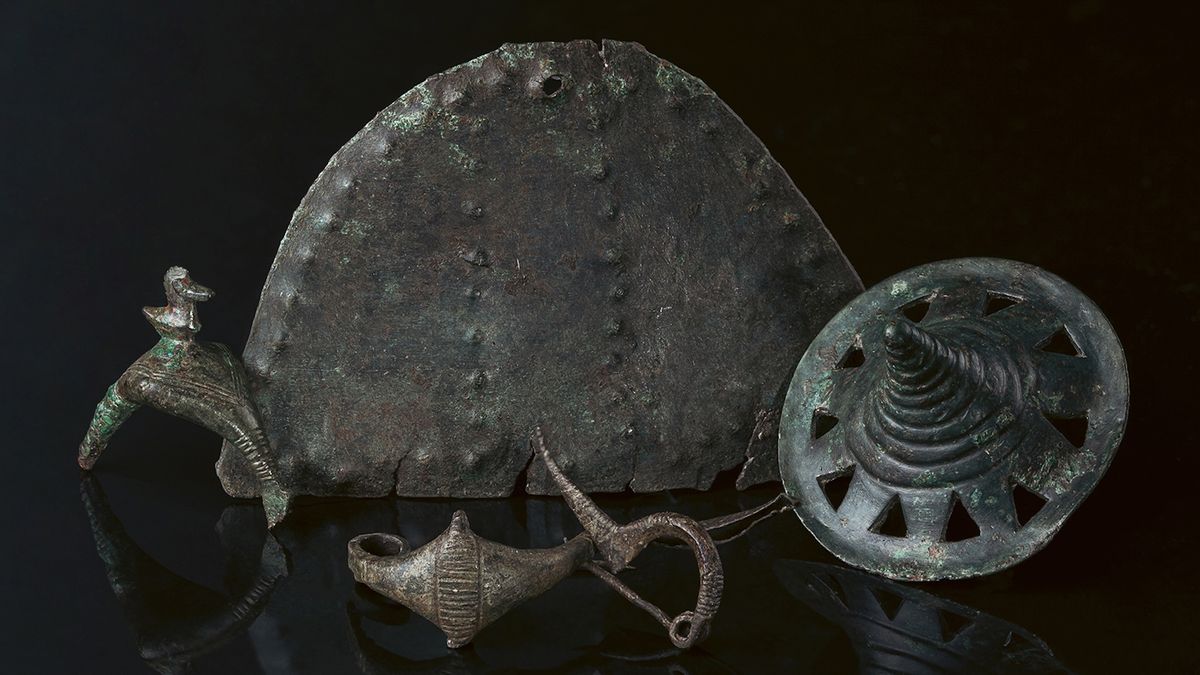Now Reading: Archaeologists Unearth 3,400-Year-Old Metal Relics on Volcanic Hilltop in Hungary
-
01
Archaeologists Unearth 3,400-Year-Old Metal Relics on Volcanic Hilltop in Hungary
Archaeologists Unearth 3,400-Year-Old Metal Relics on Volcanic Hilltop in Hungary

Rapid summary
- Archaeologists studying Somló Hill in Hungary discovered six metal hoards from as early as the 15th century B.C.
- Over 900 ancient artifacts were uncovered, including jewelry, military decorations, weapons, amber beads, fabric remains, and animal tusks.
- The findings span the Late Bronze Age (1450-800 B.C.) and Early Iron Age (800-450 B.C.), with the majority dating between 1080 to 900 B.C.
- A team used techniques such as metal-detection surveys and lidar mapping to locate artifacts concentrated on a plateau in the southeastern part of Somló Hill.
- Notable discoveries include Hoard V with metal objects stored inside a ceramic vessel – a first for western Hungary during this period.
- Researchers suggest local tribes buried these objects possibly for ritualistic or symbolic purposes; evidence points to tribal societies led by elite warriors during this era.
!Artifact
Caption: Some of the metal artifacts dating to the Early Iron Age found on somló Hill in Hungary. (Image credit: Bence Soós et al; Photo by László György; CC BY 4.0)
Indian Opinion Analysis
The archaeological discovery at Somló Hill offers important ancient insights into ancient tribal societies that dominated Western Hungary between the Late Bronze Age and Early Iron Age. While geographically distant from India, such studies contribute globally relevant learnings about early human civilizations’ practices-particularly those involving metallurgy and ritual expression. With India’s diverse historical record of artifact deposition across its own archaeological sites like Harappan cities or Mauryan-era remnants, parallels can be drawn regarding how cultures globally preserved materials symbolically throughout antiquity.
Furthermore, advancements in technologies such as lidar serve as examples for Indian archaeologists conducting surveys nationwide-particularly amid challenges posed by densely populated or agriculturally active regions. Collaborative international studies could deepen comparative analyses on transitions between eras similar to India’s change from Chalcolithic societies through classical periods like Gupta rule.Read More: Live Science
























